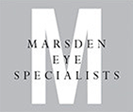What is Botox Therapy?
Botox is a type of purified protein synthesised from the bacterium, Clostridium botulinum.
It was originally introduced for the treatment of certain eye disorders. Currently, the use of Botox therapy has been expanded to include many other medical and cosmetic applications.
How Botox Therapy works
Botox causes relaxation of the wrinkle-causing muscles by blocking the action of certain chemicals that induce muscle contraction or spasm. This can result in the smoothening of fine lines on your skin and improvement in your appearance.
Indications for Botox Therapy
Ophthalmologic applications include the treatment of:
- Eyelid & facial spasms
- Strabismus (misaligned eyes)
- Blepharospasm (uncontrolled blinking)
- Drooping eyelids
- Eyelid retraction
- Inward turning eyelids
- Double vision
Cosmetic applications of Botox include the treatment of:
- Vertical frown lines between the eyebrows
- Horizontal lines on the forehead
- Laugh lines around the eyes
- Drooping corners of the mouth
Administration of Botox Therapy
Botox therapy is quick and virtually painless. The area of concern will be cleansed, and a mild numbing cream may be applied. Very small amounts of Botox will be injected into the predetermined areas. The number of injections given will depend on the degree of correction that is desired. The entire procedure will usually be completed within 15-20 minutes and you can return to your routine activities almost immediately.
Follow-up of Botox Therapy
The improvement in your appearance will usually last for about 4-6 months. Repeated Botox injections will be required thereafter as maintenance therapy. However, with continued use of Botox Therapy, the effects of treatment may last longer.
Side effects of Botox Therapy
Botox injections are very safe when administered by a trained medical professional. There may be mild bruising at the injection site, but this is temporary and will resolve.


 n
n